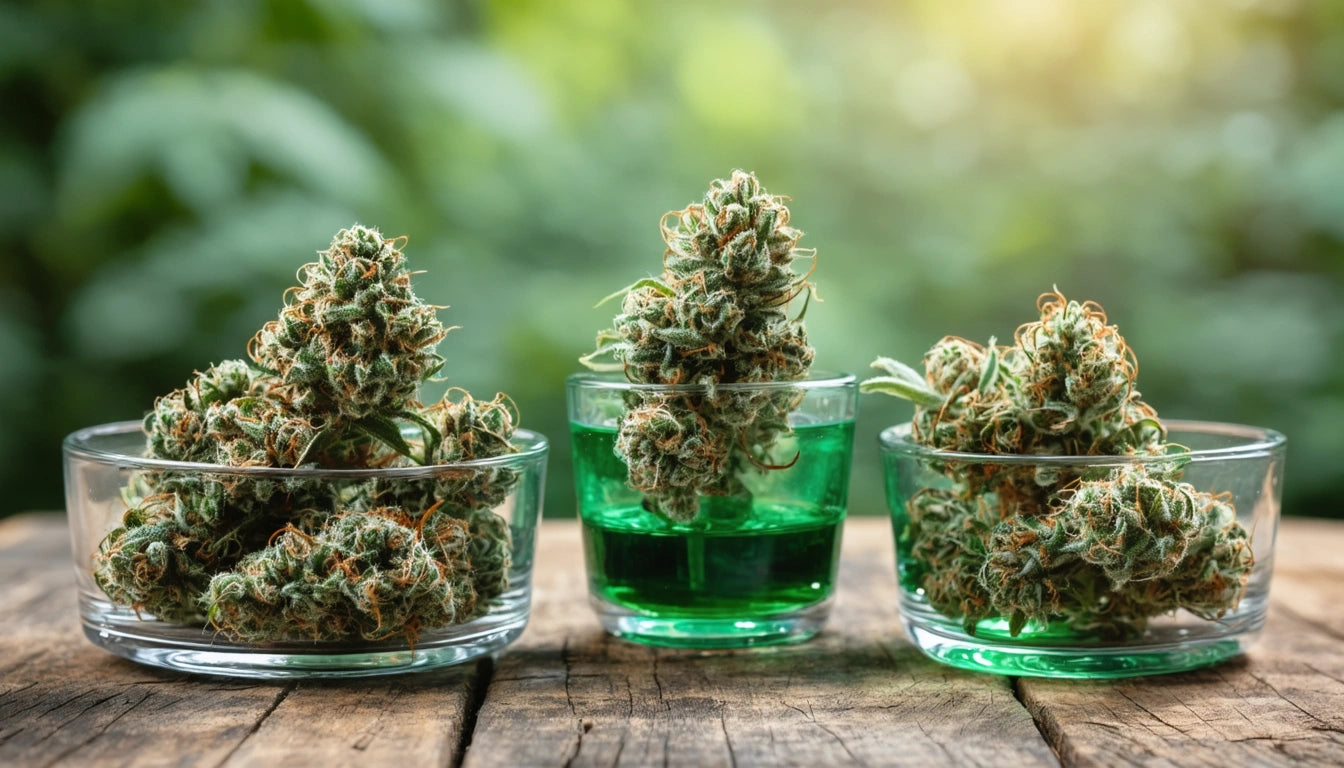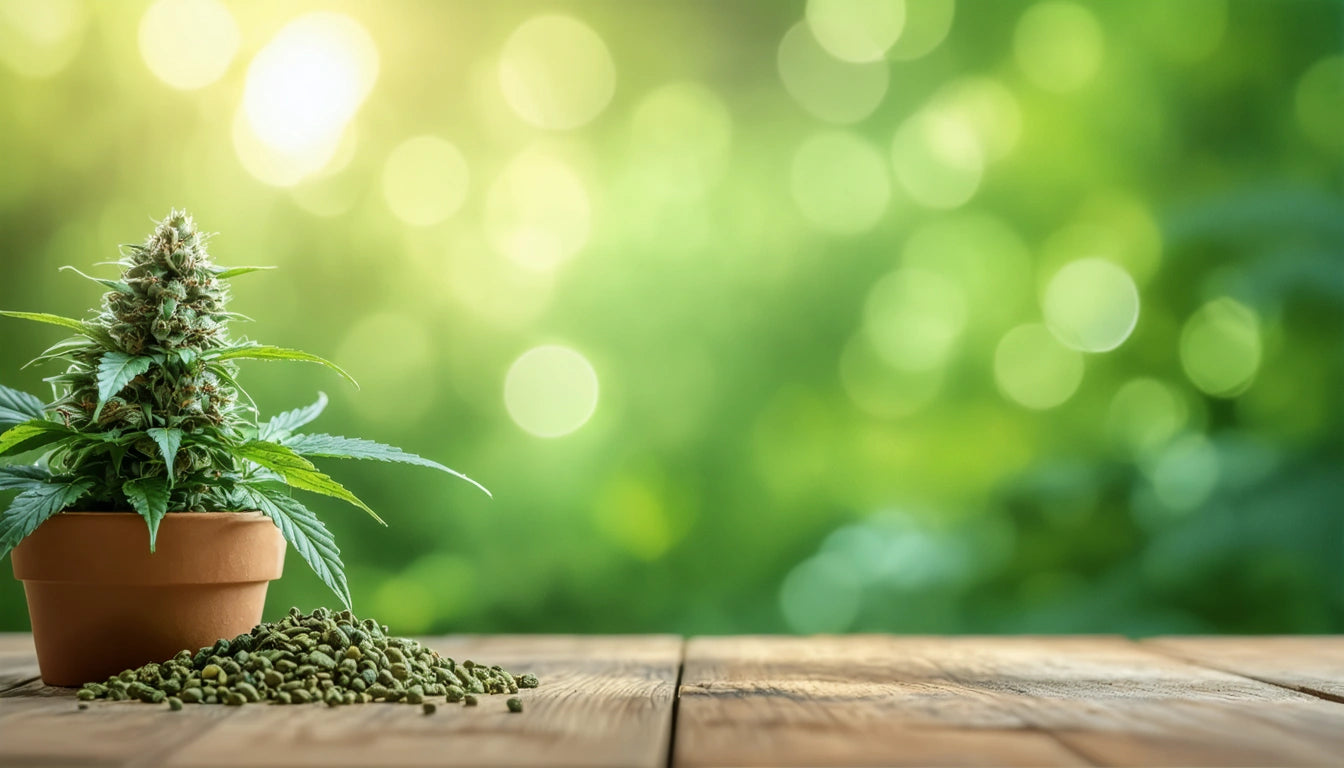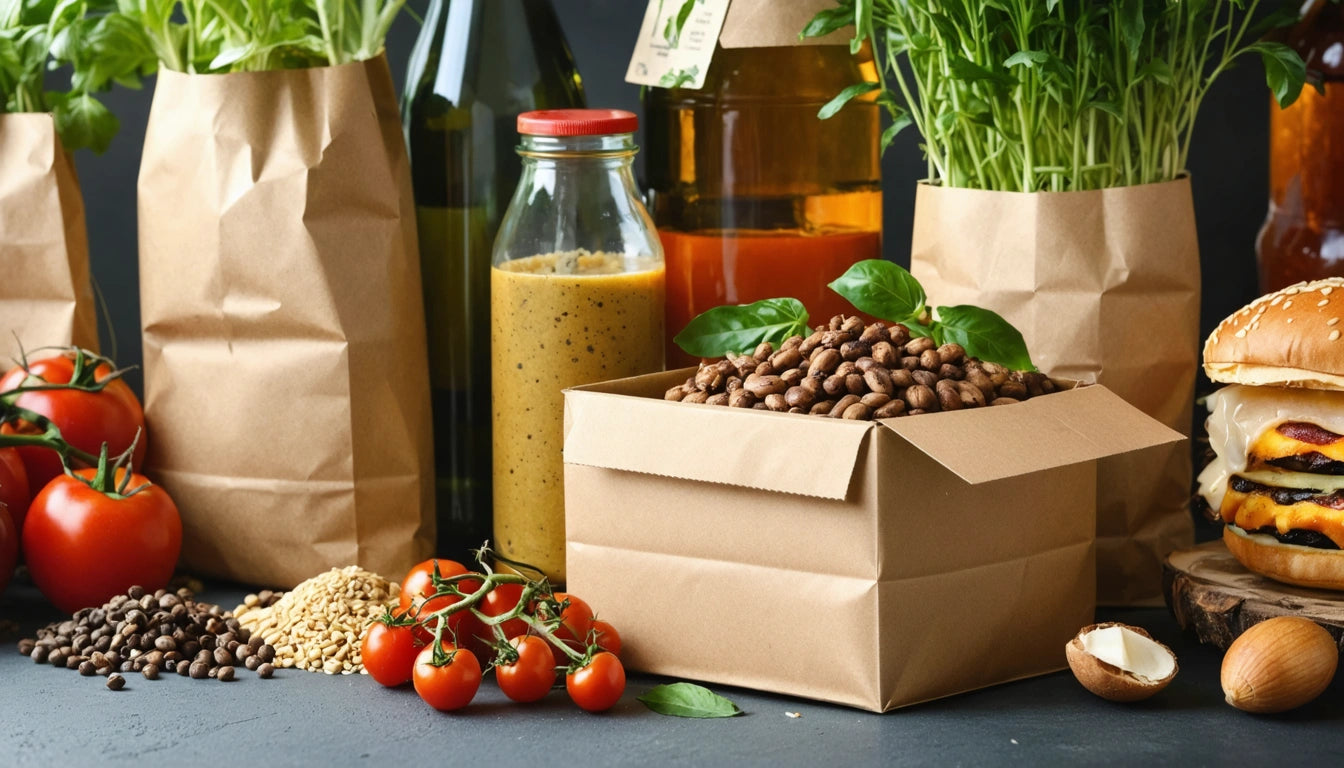Table of Contents
Understanding Cannabis: Comparing Flower, Bud, Weed, and Concentrates
The cannabis industry has evolved dramatically, bringing with it a variety of consumption methods and products. For newcomers and even experienced users, the terminology can be confusing. What's the difference between flower and bud? How do concentrates compare to traditional flower? This comprehensive guide breaks down these terms and helps you understand the key differences between cannabis products.
Terminology Basics: Flower, Bud, and Weed Explained
When discussing cannabis, terms like flower, bud, and weed are often used interchangeably, but there are subtle distinctions worth understanding:
Flower vs. Bud
The terms "flower" and "bud" essentially refer to the same part of the cannabis plant. Technically speaking, the bud is the flowering part of the female cannabis plant that contains the highest concentration of cannabinoids like THC and CBD. The term "flower" is generally considered more professional in the legal cannabis industry, while "bud" remains common in casual conversation.
According to this guide on cannabis flower quality, the distinction between flower and bud is primarily contextual rather than botanical. In retail settings, you'll typically see "flower" on product labels and menus.
Weed vs. Flower
"Weed" is a colloquial term for the entire cannabis plant or the dried flower/bud specifically. While "flower" refers to a specific part of the plant, "weed" is a general slang term that can encompass the whole plant or its consumable parts. In professional or medical contexts, the term "weed" is typically avoided in favor of "cannabis" or "flower."
Cannabis Flower Characteristics and Consumption Methods
Cannabis flower is the most traditional form of cannabis consumption and remains popular for several reasons:
- Natural form with minimal processing
- Full spectrum of cannabinoids and terpenes
- Versatile consumption methods (smoking, vaporizing)
- Wide variety of strains with distinct effects
- More easily measured and dosed with precise digital scales for accurate measurement
The anatomy of cannabis flower is complex, featuring trichomes (resin glands containing cannabinoids), pistils, calyxes, and sugar leaves. These components contribute to the flower's potency, aroma, and effects, as detailed in this exploration of marijuana flower anatomy.
Concentrates Overview: Potency, Production, and Varieties
Cannabis concentrates are products made by extracting cannabinoids and terpenes from the plant material, resulting in higher potency products:
Production Methods
Concentrates are produced through various extraction methods:
- Solvent-based extractions (using butane, CO2, or ethanol)
- Solventless extractions (using heat, pressure, or mechanical separation)
- Water-based extractions (for hash and bubble hash)
Common Concentrate Types
The world of concentrates includes diverse products with varying consistencies and potencies:
- Oils and distillates (used in vape cartridges)
- Wax, budder, and shatter (used for dabbing)
- Rosin and live resin (solventless options)
- Hash and kief (traditional concentrates)
This comparison of flower versus concentrates highlights that while flower typically contains 15-25% THC, concentrates can reach 60-90% THC content, representing a significant difference in potency.
Comparing Effects: Flower vs. Concentrates vs. Edibles
Onset and Duration
Different cannabis products deliver effects on varying timelines:
- Flower: Effects typically begin within minutes and last 1-3 hours
- Concentrates: Effects can be immediate and intense, lasting 1-4 hours
- Edibles: Onset takes 30-90 minutes, with effects lasting 4-8 hours
Experience Differences
The qualitative differences between flower and concentrate highs are substantial. Flower often provides a more balanced experience with the "entourage effect" from its full spectrum of cannabinoids and terpenes. Concentrates typically deliver more intense effects that can be overwhelming for inexperienced users.
As discussed in this comparison of dabs and flower, the concentrated nature of extracts means users need to be particularly mindful of dosing to avoid uncomfortable experiences.
Medical Considerations
For medical cannabis patients, the choice between flower and concentrates often depends on:
- Needed potency for symptom relief
- Onset time requirements
- Duration of relief needed
- Consumption preferences and restrictions
Choosing the Right Cannabis Product for Your Needs
When deciding between flower, concentrates, or other cannabis products, consider these factors:
- Experience level: Beginners may prefer lower-potency flower
- Desired effects: Different strains and product types offer varied experiences
- Consumption preferences: Consider discretion, convenience, and ritual
- Medical needs: Specific conditions may respond better to particular formats
- Budget considerations: Price per dose varies significantly between products
The cannabis landscape continues to evolve with innovations in both flower cultivation and concentrate production. Understanding the fundamental differences between these products helps consumers make informed choices that align with their preferences and needs.
Whether you prefer the traditional experience of flower, the potency of concentrates, or the convenience of other formats, today's cannabis market offers options for every consumer. By understanding the terminology, characteristics, and effects of different cannabis products, you can navigate this diverse marketplace with confidence.











Leave a comment
All comments are moderated before being published.
This site is protected by hCaptcha and the hCaptcha Privacy Policy and Terms of Service apply.